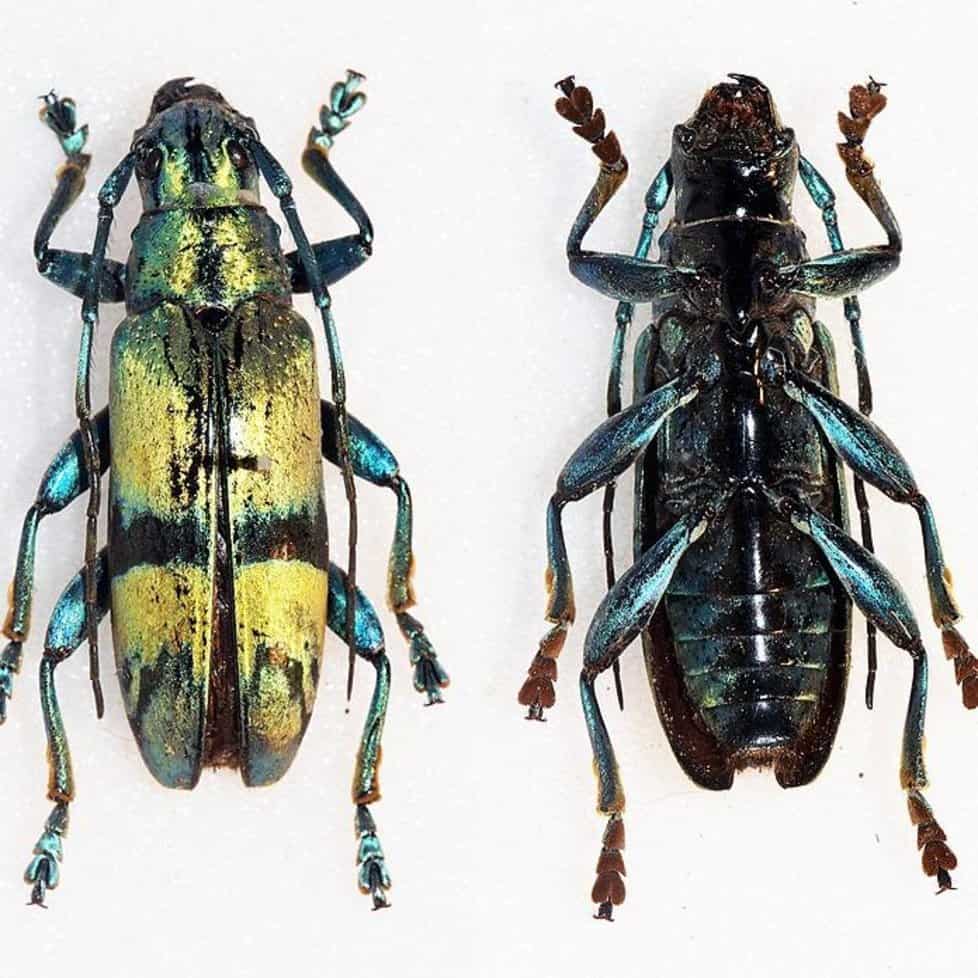In an recent study PhD student Jeroen Sol from Eindhoven University Of Technology developed a 4D-printed beetle that changes color when exposed to water.
3D printing has become mainstream. For a few hundred euros you can buy a 3D printer online. But what about 4D printing? How do you print an object that can change over time, for example by reacting to touch, light or moisture? It turns out that this is not as easy as you might think. PhD student Jeroen Sol took up the challenge. He found inspiration in the world of the longhorn beetle and other animals that use iridescence and other forms of color change.
Sol’s research group, led by professor Albert Schenning, has extensive experience with smart materials that respond to external stimuli, such as light, temperature or humidity. The materials use liquid crystal technology, similar to the techniques used in LCD screens, but applied in plastics. These crystals acquire different properties depending on the direction in which they are aligned (they become anisotropic). This can be either mechanical, in which case they become stronger in one direction than in the other, or optical, in which case they have a different color depending on the angle of incidence of the light.
An iridescendent beetle
The latter is exactly what Sol has been working on for the past four years. Is it possible to print an object that changes color under the influence of humidity? “I found the inspiration for this in nature, and in particular in the Tmesisternus isabellae, a species of longhorn beetle whose elytra changes color in response to humidity.”
That Sol chose moisture as a stimulus, rather than light (as PhD student Marina Pilz da Cunha from the same research group did earlier for her walking mini-robot), is not an accident. “Humans are largely composed of water, and a sensor that can easily and cheaply be printed using a 3D printer, and that responds to moisture, could have all kinds of applications in healthcare. Think of a ring that measures perspiration, or in the future maybe your blood sugar.”
But Sol went a step further. He actually printed a beetle. “In the world of materials science it is very important that you make a demonstrator that proves that your invention actually works. And the choice of an animal is obvious, because there are numerous animals that make use of iridescence and other forms of color change, for example for camouflage.”
A bath of acid
But how does this beetle work? Sol explains. “First I printed a beetle from hard plastic, and applied elytra to it with photonic ink. This was also done with a printer. I then treated this layer with an acid. This causes the crystals in the ink to react to moisture. With more moisture, the material swells, so to speak, stretching the spiral structure of the crystals. This then changes the color.”
The beauty is that you can manipulate sensitivity to moisture, by making the molecules less or more charged. “That opens up all kinds of possibilities for future applications.”
Next, the researcher placed the beetle in an enclosed space where he could control the humidity. With more moisture, the green beetle slowly became redder and redder. If he brought the moisture level back down, the beetle turned green again.
“The latter is crucial,” says Sol. “That means the effect is reversible. Without the user having to reset it, it can be used again as a sensor or actuator.”
Future
The young researcher talks about his research with infectious enthusiasm. “I think it’s very important that we make it clear to the outside world what scientists are doing. People really don’t need to understand every detail, but they do need to know what we are up to. That’s why I like teaching so much. Transferring knowledge to other people.”
The researcher has since found a new job at a spin-off of his research group, Lusoco. The company is working on the development of fluorescent inks for lighting, power generation and buildings, for example.
“I’m really looking forward to that. Moreover, the company is located on campus, so for now I won’t be leaving here!”
Subscribe to AM Chronicle Newsletter to stay connected: https://bit.ly/3fBZ1mP
Follow us on LinkedIn: https://bit.ly/3IjhrFq
Visit for more interesting content on additive manufacturing: https://amchronicle.com/



